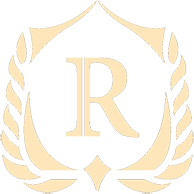Healthy teeth and gums not only help to avoid various mouth problems, but are also essential for the overall well-being of the body – gum disease for instance, may lead to complications such as diabetes or heart disease. This is why it is important to clean your teeth and gums regularly and properly.

Among others, toothbrush plays an important role in this task, but in many stores assortment is so rich that one does not really know which one to take home. Of course, it is reasonable to ask, whether it matters at all what toothbrush we use. Is there any significant difference between them?
Surely there is, and if you choose the wrong toothbrush, you can do more damage to your teeth and gums than help with it. This article will help you choose!
Toothbrush bristles: Soft, medium or hard?
The brush part of both conventional and electric toothbrushes (discussed in more detail below) consists of nylon fibres. These fibres can be soft, medium and hard. It does make sense that the hard ones will be the best for brushing your teeth, right? It is not quite so…
We would rather recommend medium or even soft toothbrushes, as harder fibres may damage gums much more easily and may also damage enamel. People usually do not even notice if they are brushing too strongly with their toothbrush (e.g. because they are tired or stressed, etc.) and this may even cause painful gum bleeding (and not always immediately).
Soft-fibre toothbrushes are much gentler, although they may not be as effective at removing stubborn plaques. Unless you have gum problems or your dentist recommends otherwise, try medium bristle toothbrushes and switch to softer ones, if needed.
It is also worth mentioning toothbrushes that are specifically advertised as having bristles made from natural materials such as tree roots. While these may be environmentally conscious choices, they will get an unpleasant odour after a few days of use; thus, they are not ideal for keeping your mouth clean.
Size and design
In general, it is recommended to use toothbrushes with a smaller head, since they will clean easier even the parts hardest to reach. Of course, if you have larger mouth and teeth, even larger toothbrush heads can be considered small enough. So you have to experience this for yourself.
Do not choose toothbrush handle based on colour or design. The most important aspect is that you can hold it comfortably in your hand and that its surface does not become sloppy when you water it.
The big question: Conventional or electric toothbrush?
Both types have their advantages and disadvantages (discussed in more detail below). Some people do not like the vibration of electrical devices or are not willing to spend more money on them, while others feel that their teeth are much cleaner when they are brushed with an electric toothbrush.
Most research results suggest that there is no significant difference between the effectiveness of conventional and electric toothbrushes. Some research suggests that rotating-oscillating toothbrushes (which not only rotate but also move back and forth) may be more effective at removing plaques than traditional alternatives.
Anyway, whatever toothbrush you choose, it is important that you replace it regularly (for electric toothbrushes, of course, you only need to replace heads, not the entire device). Nylon fibres wear out sooner or later, and it is a good idea to replace them at least every three months (for example, adjusted to changing seasons). Of course, if the fibres wear out earlier, or you have just recovered from a disease, you should replace your toothbrush (or head) as soon as possible and restart countdown of three months.
The truth is that much more depends on the right brushing technique (2 minutes, at least 30 seconds for each of the four mouth quarters, at the right angle and with proper movements) than on whether you use an electric or a conventional toothbrush.
In part 2 you can read about the comparison between the two types by clicking here.








